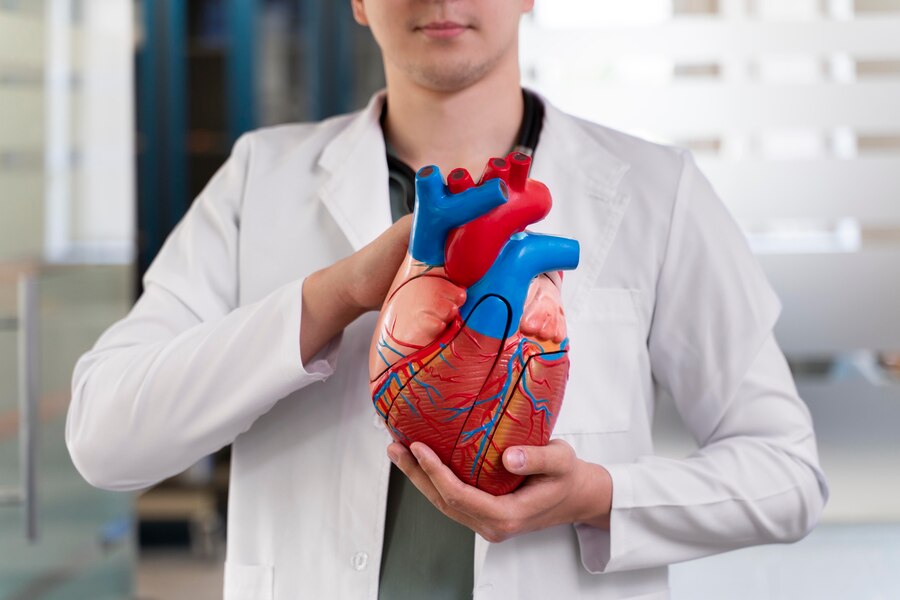Heart disease remains one of the most significant health concerns worldwide, but not every treatment requires surgery or invasive procedures. Many patients in Jackson Heights can benefit from non-invasive heart disease treatments that offer effective solutions with minimal risk. These treatments often focus on lifestyle changes, medication, and advanced therapies that improve heart health without the need for surgical intervention. In this blog, we’ll explore the range of non-invasive treatment options available for managing heart disease treatment in Jackson Heights, emphasizing their benefits and when they may be appropriate for patients
1. Medication: The First Line of Defense
Medications are often the first non-invasive treatment option for managing heart disease. They can help control various risk factors, such as high blood pressure, high cholesterol, and blood clots, reducing the strain on the heart and preventing further damage. Common medications prescribed for heart disease include:
- Statins: These medications lower cholesterol levels by inhibiting the liver’s production of cholesterol. Statins are often prescribed to patients with high cholesterol or those who have had a heart attack or stroke.
- Beta-blockers: Beta-blockers help reduce the heart’s workload by slowing the heart rate and lowering blood pressure. They are commonly prescribed for patients with high blood pressure, arrhythmias, or angina.
- ACE Inhibitors and ARBs: These medications help relax blood vessels, lowering blood pressure and reducing the strain on the heart. They are often prescribed to patients with high blood pressure or heart failure.
- Antiplatelets and Anticoagulants: These medications, such as aspirin and warfarin, help prevent blood clots that can lead to heart attacks or strokes. They are especially important for patients with a history of cardiovascular events.
Working with a healthcare provider in Jackson Heights to tailor a medication regimen can help manage heart disease effectively without the need for surgery.
2. Enhanced External Counterpulsation (EECP): A Non-Invasive Therapy
Enhanced External Counterpulsation (EECP) is an innovative non-invasive treatment option for patients with chronic angina or heart failure who may not be candidates for surgery. This therapy improves blood flow to the heart by increasing the oxygen supply, helping reduce symptoms like chest pain and shortness of breath.
Here’s how EECP works:
- Patients lie on a treatment table while cuffs are placed around their legs.
- The cuffs inflate and deflate in sync with the patient’s heartbeat, promoting better circulation and blood flow to the heart.
- Over time, EECP helps create new blood vessels around blocked arteries, providing a natural bypass and improving overall heart function.
EECP is a painless and well-tolerated procedure, and it’s available in Jackson Heights for patients seeking non-invasive alternatives to traditional heart disease treatments.
3. Cardiac Rehabilitation: A Holistic Approach to Heart Health
Cardiac rehabilitation is another non-invasive treatment option that plays a critical role in recovering from heart disease or preventing further complications. Cardiac rehab combines supervised exercise, education, and counseling to improve heart health and overall quality of life.
Here are the key components of a cardiac rehab program:
- Exercise: Patients participate in a structured exercise program designed to strengthen the heart and improve cardiovascular fitness. The exercises are tailored to each patient’s health status and physical capabilities.
- Education: Patients learn about heart-healthy habits, including dietary changes, stress management, and smoking cessation, to support long-term heart health.
- Counseling and Support: Emotional and mental health are also addressed during cardiac rehab, as heart disease can take a toll on a patient’s mental well-being. Counseling helps patients cope with anxiety, depression, or fear related to their heart condition.
In Jackson Heights, cardiac rehab programs are available at many medical centers and provide patients with a comprehensive, non-invasive approach to improving heart health.
4. Dietary Changes: The Cornerstone of Non-Invasive Heart Disease Treatment
A heart-healthy diet is often the cornerstone of non-invasive heart disease management. What you eat can directly impact cholesterol levels, blood pressure, and overall heart function. Here’s how to optimize your diet to support heart disease treatment in Jackson Heights:
- Eat More Fruits and Vegetables: Aim to fill half of your plate with fruits and vegetables, which are rich in fiber, vitamins, and antioxidants. These nutrients help reduce inflammation and protect the heart.
- Choose Whole Grains: Swap refined grains like white bread and pasta for whole grains like brown rice, oats, and quinoa. Whole grains help lower cholesterol and stabilize blood sugar levels.
- Incorporate Lean Proteins: Include lean proteins like fish, poultry, and plant-based proteins in your diet. Fatty fish, such as salmon and mackerel, are especially beneficial due to their high omega-3 fatty acid content, which supports heart health.
- Limit Saturated and Trans Fats: Reduce your intake of saturated fats (found in red meat and full-fat dairy) and trans fats (found in many processed foods) to help lower cholesterol levels.
- Watch Sodium Intake: Excess sodium can raise blood pressure, increasing the risk of heart disease. Choose low-sodium options and avoid processed foods whenever possible.
Making these dietary changes can complement medical treatments and improve the overall success of heart disease treatment in Jackson Heights.
5. The Power of Exercise in Non-Invasive Heart Disease Management
Exercise is a key element in preventing and managing heart disease. Even moderate physical activity can strengthen the heart, improve circulation, and reduce the risk of heart attacks. Here’s how to incorporate exercise into your daily routine:
- Start with Walking: Walking is a simple yet effective way to get your heart pumping. Aim for at least 30 minutes of brisk walking most days of the week.
- Incorporate Strength Training: Strength training, such as lifting weights or using resistance bands, can help build muscle, improve metabolism, and support overall heart health.
- Stay Active Throughout the Day: Small changes, like taking the stairs or walking during your lunch break, can add up to significant heart health benefits over time.
Always consult your healthcare provider in Jackson Heights before starting a new exercise program, especially if you have a heart condition.
6. Stress Management: A Vital Non-Invasive Strategy
Chronic stress can contribute to high blood pressure and increase the risk of heart disease. Managing stress is a non-invasive way to support heart health. Here are some techniques to help reduce stress:
- Mindfulness and Meditation: Practicing mindfulness and meditation can help reduce stress and promote relaxation. These techniques focus on deep breathing and being present in the moment.
- Regular Physical Activity: Exercise is a natural stress reliever. Engaging in activities like yoga, walking, or swimming can reduce tension and improve your mood.
- Adequate Sleep: Prioritize getting 7-9 hours of sleep each night, as poor sleep can negatively impact heart health and increase stress levels.
Managing stress effectively can make a significant difference in the success of heart disease treatment in Jackson Heights.
FAQs About Non-Invasive Heart Disease Treatment in Jackson Heights
1. What is the most common non-invasive heart disease treatment?
Medication is the most common non-invasive treatment option for heart disease. It can help control blood pressure, cholesterol, and other risk factors.
2. Can lifestyle changes alone treat heart disease?
While lifestyle changes play a crucial role, they may not be enough for all patients. Combining lifestyle modifications with medication or other non-invasive therapies often yields the best results.
3. Is EECP painful?
No, EECP is a painless procedure. Most patients find it comfortable, and there is no recovery time needed after each session.
4. How long does cardiac rehabilitation last?
Cardiac rehabilitation programs typically last 12-36 sessions, depending on the patient’s condition and progress.
5. Can stress alone cause heart disease?
While stress alone may not cause heart disease, it can significantly increase the risk by contributing to high blood pressure, unhealthy coping behaviors, and inflammation.
Conclusion
Non-invasive heart disease treatment options offer effective solutions for patients looking to manage their condition without surgery. From medications and dietary changes to EECP and cardiac rehab, there are many ways to improve heart health in Jackson Heights. If you’re seeking non-invasive heart disease treatment in Jackson Heights, consult with a heart specialist to explore your options and develop a personalized treatment plan.








